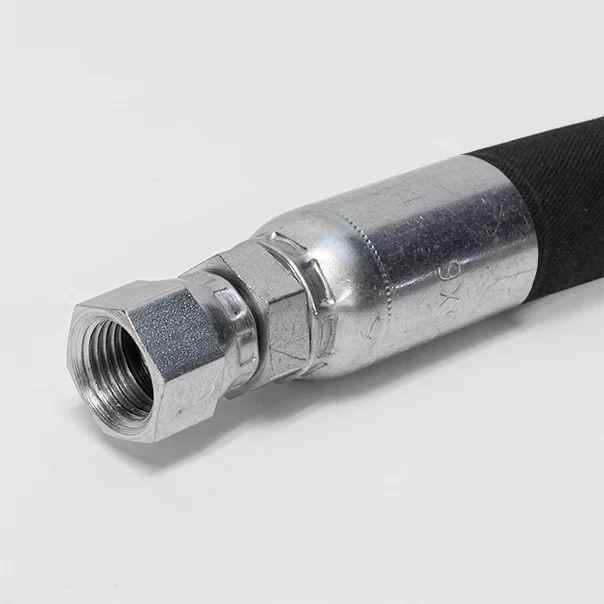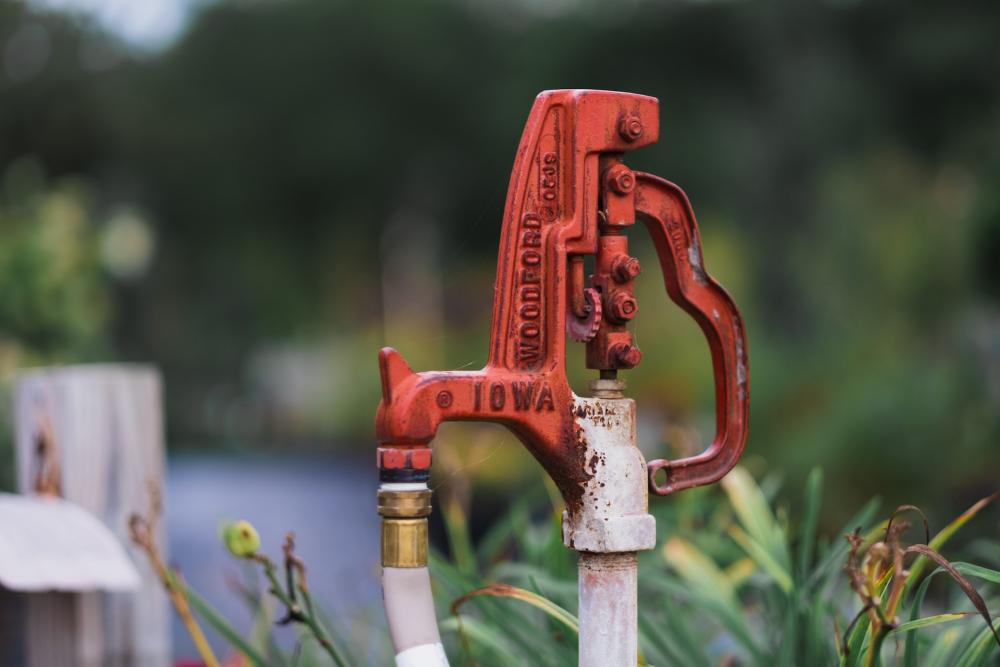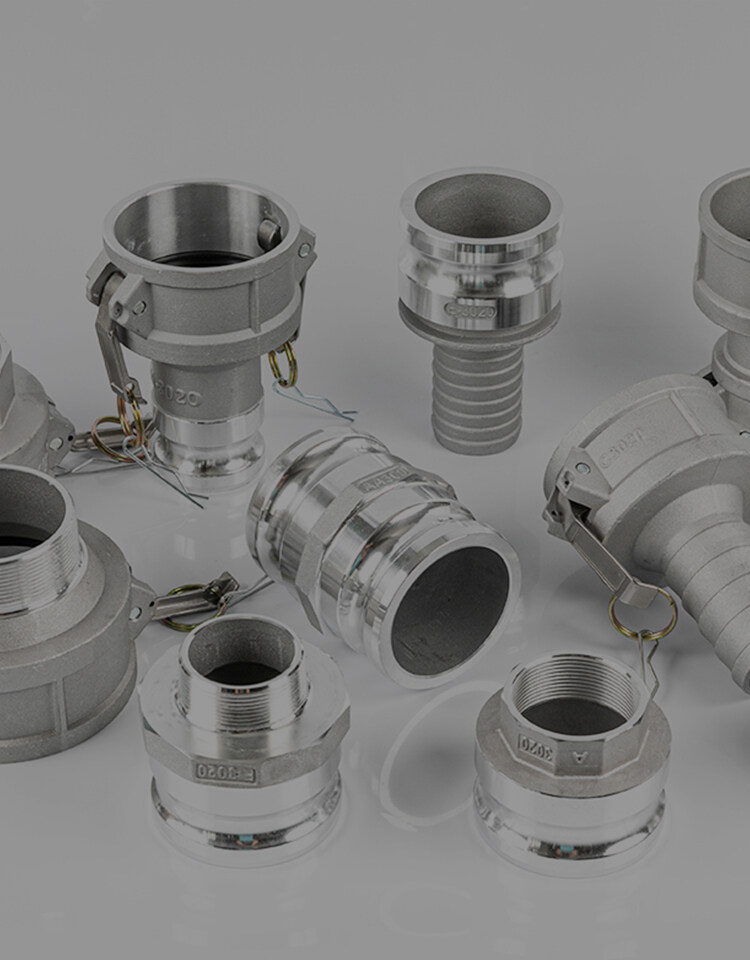Erreur de format d'e-mail
emailCannotEmpty
emailDoesExist
pwdLetterLimtTip
inconsistentPwd
pwdLetterLimtTip
inconsistentPwd

Nouvelles
Ici, vous pouvez décrire un morceau de texte que vous souhaitez exprimer

The Essential Guide to Cam Lock Water Fittings for Secure Fluid Management
In the intricate world of fluid management, the quest for a secure, efficient, and reliable connection system is never-ending. Enter cam lock water fittings, the stalwarts of quick-connect technology, which have revolutionized the way we manage water and other fluids in a multitude of applications. These fittings, known for their robust construction and ease of use, have become the go-to choice for professionals in industries as diverse as agriculture, firefighting, and industrial processing. This post will serve as your comprehensive guide to understanding cam lock water fittings, their benefits, and how to select and implement them in your fluid management systems.
Understanding Cam Lock Water Fittings
At the heart of cam lock water fittings lies a simple yet powerful design. These fittings consist of two main components: the male adapter, or “plug,” and the female coupler, or “socket.” The male adapter is inserted into the female coupler, and two cam levers on the coupler are then depressed to secure the connection. This cam and groove design ensures a tight seal that can withstand significant pressure, making it ideal for a wide range of water transfer applications.
The Advantages of Using Cam Lock Water Fittings
Cam lock water fittings offer a plethora of advantages that make them a preferred choice for fluid transfer:
Quick and Easy Connection: The cam lever mechanism allows for rapid connection and disconnection, which is invaluable in emergency situations or when time is of the essence.
No Need for Tools: The simplicity of the cam lock system eliminates the need for wrenches or specialized tools, allowing for connections to be made quickly and with minimal effort.
Versatile and Adaptable: With a variety of materials and sizes available, they can be adapted to suit a wide range of applications and fluid types.
Leak-Proof Performance: The precision-engineered design provides a secure seal that minimizes the risk of leaks, ensuring that fluids are transferred efficiently and safely.
Selecting the Right Cam Lock Quick Coupling
When selecting a cam lock quick coupling, it’s important to consider the following factors:
Material Compatibility: Choose a material that is compatible with the fluid being transferred. For water applications, aluminum, stainless steel, and polypropylene are common choices.
Size and Flow Requirements: Select a size that matches the inner diameter of your hoses or pipes to ensure optimal flow. Cam lock sizes range from small ½-inch fittings to larger 6-inch fittings for high-volume transfer.
Pressure Ratings: Ensure that the fitting can handle the maximum pressure of your system. Overlooking this can lead to fitting failure and potential safety hazards.
Cam Lock Sizes and Compatibility
They are standardized in sizes, which are typically denoted in inches. The size of the fitting corresponds to the diameter of the hose or pipe it is intended to connect. It is crucial to select the correct cam lock size to ensure a secure fit and prevent leaks or disconnections during operation. Common sizes include 1-inch for small transfer lines, up to camlock 6 fittings for large industrial applications.
The Durability of Cam Lock Stainless Steel Fittings
For environments where durability and corrosion resistance are paramount, cam lock stainless steel fittings are the ideal choice. These fittings are capable of withstanding harsh conditions, including exposure to corrosive substances and extreme temperatures. Stainless steel cam lock fittings are often used in marine applications, chemical processing, and any setting where longevity and reliability are critical.
Cam Locks for Hoses: Ensuring a Tight Seal
Cam locks for hoses are specifically engineered to create a secure and leak-proof connection between the hose and the fitting. The cam lock mechanism ensures that the hose is firmly attached to the fitting, providing a reliable seal that maintains the integrity of the fluid transfer system. Proper installation and regular maintenance are key to ensuring that cam locks for hoses continue to perform at their best.
The Versatility of Camlock 6 Fittings
Camlock 6 fittings, which refer to the 6-inch size, are designed for applications that require the transfer of large volumes of water or other fluids. These large fittings are commonly used in industrial settings, such as water treatment plants, agricultural irrigation systems, and firefighting operations, where high-capacity flow is necessary to meet the demands of the application.
Installation and Maintenance of Cam Lock Water Fittings
Proper installation and maintenance are essential for the optimal performance. To install these fittings:
Inspect the Fittings: Before installation, inspect the cam lock fittings for any signs of damage or debris that could compromise the connection.
Check the Gasket: Ensure that the gasket is properly seated within the female coupler. A damaged or improperly seated gasket can lead to leaks.
Align and Connect: Align the male adapter with the female coupler and insert it. Press down the cam levers to lock the fitting in place.
Test the Connection: Perform a low-pressure test to verify the integrity of the connection before using it in full operation.
Installation and Maintenance of Cam Lock Water Fittings
Installation:
Inspection: Before installation, inspect the fittings for any damage or defects. Ensure that the gaskets are in place and free from imperfections that could cause leaks.
Alignment: Align the male and female parts of the cam lock fitting. The male adapter should be inserted squarely into the female coupler to prevent cross-threading or misalignment.
Connection: Insert the male adapter into the female coupler. Press the handles of the cam coupler down until they snap into place, securing the connection. Ensure that the arms are fully closed and locked in position.
Testing: Once installed, test the connection with water at a lower pressure than the system’s maximum to check for leaks. If leaks are present, disconnect and re-examine the gasket and fittings before re-testing.
Maintenance:
Regular Inspection: Periodically inspect the fittings for signs of wear, such as cracks or erosion. Check the gaskets for any signs of deterioration and replace them if necessary.
Cleaning: Keep the fittings clean from debris and buildup, which can affect the integrity of the seal. Use appropriate cleaning agents that do not damage the material of the cam lock fittings.
Lubrication: If the cam lock fittings are difficult to operate, apply a small amount of lubricant to the moving parts. Use a lubricant that is compatible with the material of the fittings and the type of fluid being transferred.
Storage: When not in use, store the cam lock water fittings in a clean, dry environment to prevent corrosion or damage.
Troubleshooting Common Issues with Cam Lock Water Fittings
Leaks:
Cause: Leaks can occur if the gasket is damaged, not seated properly, or absent. They can also result from a misaligned or improperly secured connection.
Solution: Check the gasket and replace it if it’s damaged. Ensure that the connection is properly aligned and the cam arms are fully locked in place.
Difficulty Connecting/Disconnecting:
Cause: This issue may arise due to dirt or grit buildup, damaged cam arms, or a deformed coupler.
Solution: Clean the fittings thoroughly and inspect for damage. If the cam arms are bent or the coupler is deformed, replace the affected parts.
Pressure Issues:
Cause: If the system is not reaching the desired pressure, this could be due to an incorrect cam lock size or a leak in the system.
Solution: Verify that the cam lock sizes are appropriate for the system’s hoses or pipes. Check the entire system for leaks and rectify any issues found.
Conclusion: The Role of Cam Lock Water Fittings in Modern Fluid Management
Cam lock water fittings are a linchpin in the efficient management of fluid systems. Their design allows for quick and secure connections, making them invaluable in situations where time and safety are critical. The variety of cam lock sizes and materials, including cam lock stainless steel options, provides solutions for virtually any application, from simple garden watering systems to complex industrial fluid networks.
The ease of use of cam lock quick coupling mechanisms has led to widespread adoption in fields such as agriculture, where irrigation systems rely on the rapid connection and disconnection capabilities of cam locks for hoses. In emergency services, such as firefighting, the ability to quickly establish water supply lines can be life-saving.
By selecting the appropriate cam lock water fittings for your application and adhering to proper installation and maintenance practices, you can ensure a reliable and robust fluid management system. Whether you’re using a standard 2-inch fitting or a large camlock 6 fitting for high-volume transfer, the integrity of your system hinges on the quality of its components and the care with which they are used.

